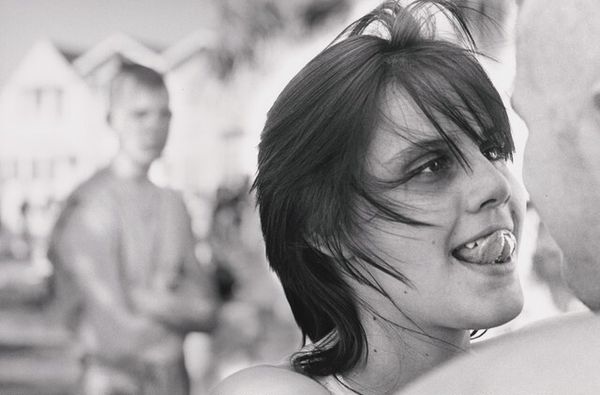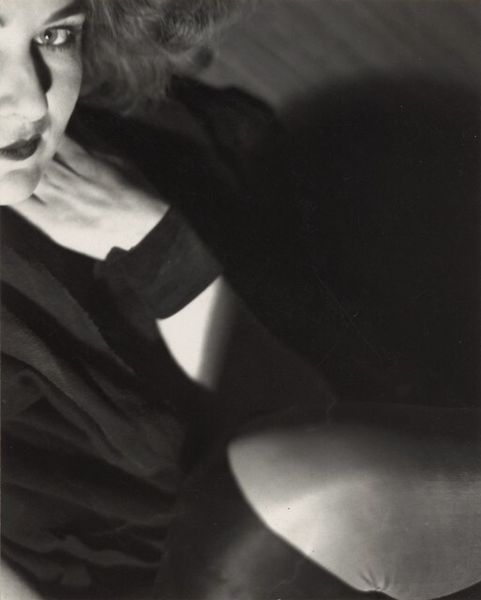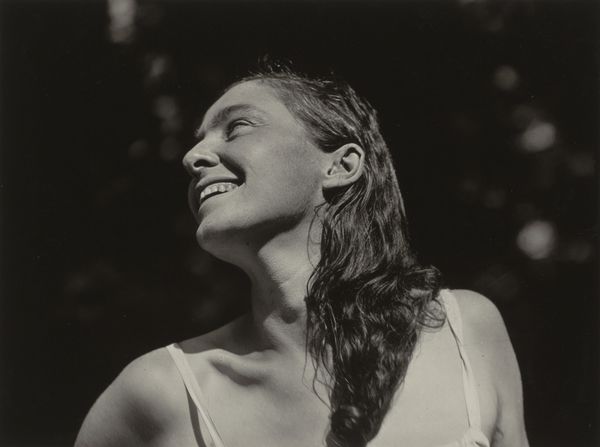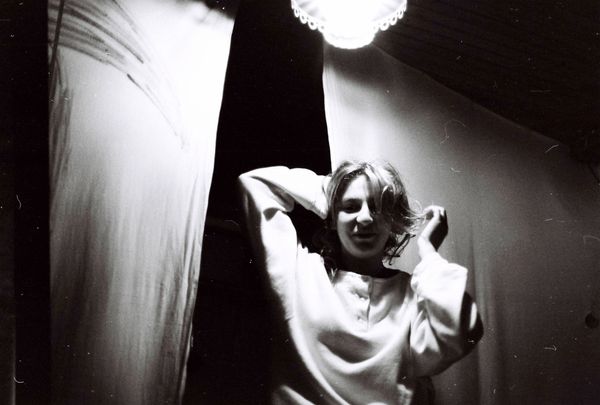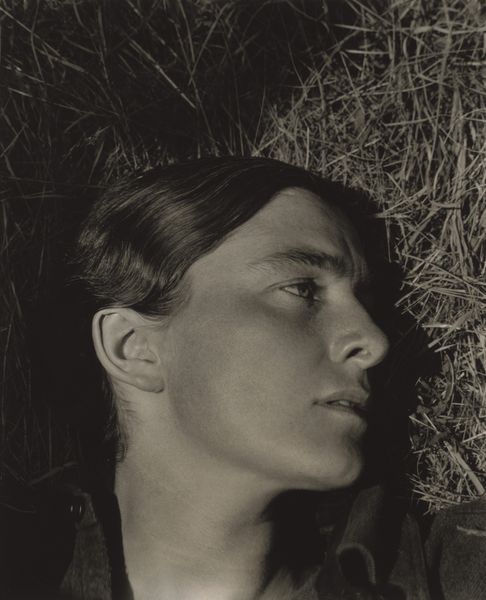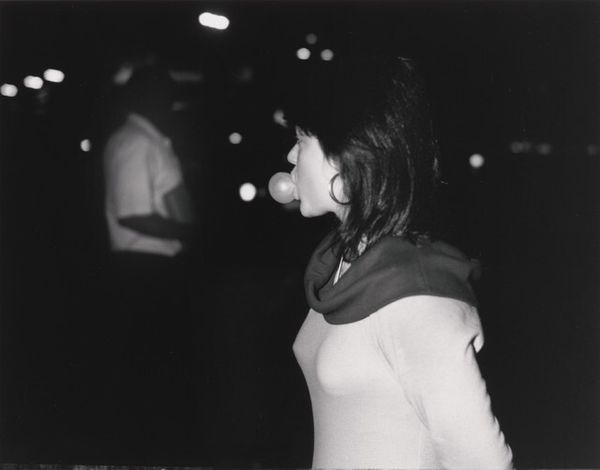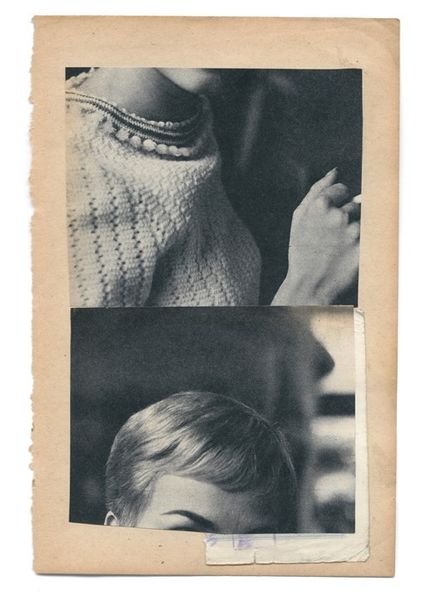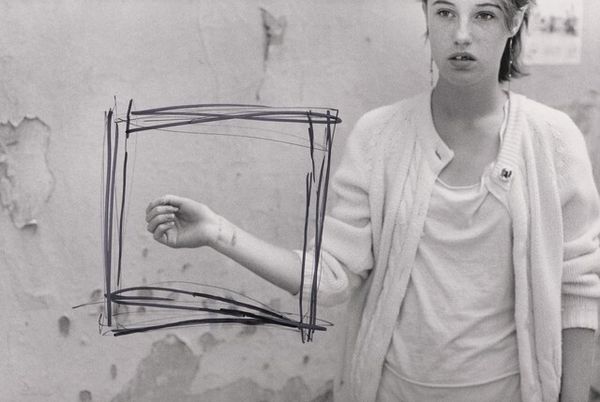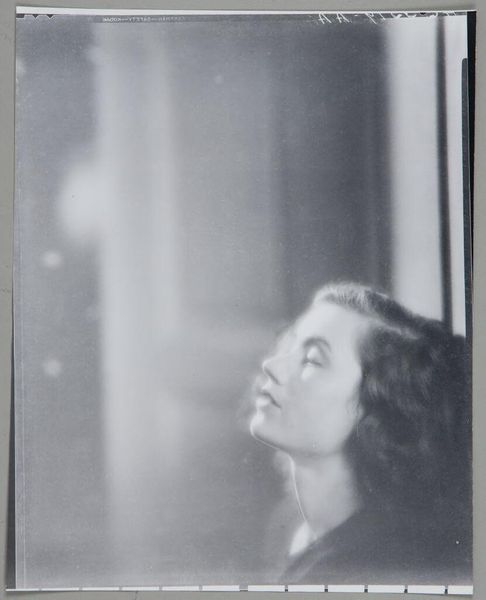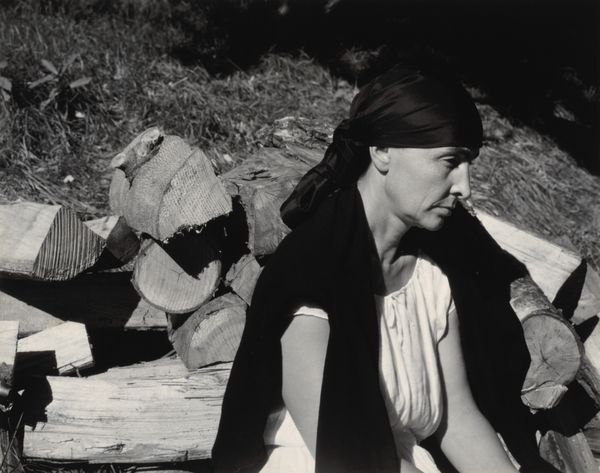
photography
#
portrait
#
photo restoration
#
low key portrait
#
portrait image
#
portrait
#
portrait subject
#
black and white format
#
street-photography
#
photography
#
portrait reference
#
portrait head and shoulder
#
black and white
#
single portrait
#
realism
Dimensions: image: 28.58 × 22.86 cm (11 1/4 × 9 in.) sheet: 50.48 × 40.64 cm (19 7/8 × 16 in.)
Copyright: National Gallery of Art: CC0 1.0
Curator: Up next, we have "Doris, Friedrichstrasse" by John Gossage, captured in 1982. It’s a striking black and white portrait, part of his exploration of urban landscapes and their inhabitants. Editor: The first thing that strikes me is the sense of…apprehension, maybe? It’s in her eyes. She's looking off to the side, almost guarded. The wind is catching strands of her hair. There is definitely movement. Curator: That tension speaks volumes, doesn't it? Gossage often incorporated elements of realism within his portraits to highlight a sense of everyday life, but not without the psychological subtext you immediately picked up on. It's Friedrichstrasse, after all – a place marked by historical division and Cold War anxiety at that time. Editor: Exactly. You've got this young woman – Doris – against the backdrop of a street heavily burdened by political and social weight. It suggests her personal narrative is caught within a much broader historical moment. Is she simply waiting for a train at that station we glimpse behind her, or is the “U” for the metro in the background a signifier for Underground Resistance? We can't know, of course, but she has a coded almost clandestine energy to her. Curator: Interesting reading into the architecture there. In terms of composition, I'm drawn to the slightly off-center framing and how it contributes to the image’s slightly unsettled atmosphere. The subway sign, even blurred as it is, becomes almost an emblem of the divided city, or more precisely, a sign of travel out of it or a return home to it. Editor: And there's also the undeniable voyeuristic quality to the image – are we intruding? It makes us as viewers complicit in that environment. The unflinching stare avoids idealization; there is this sense of lived experiences imprinted on Doris. Considering how patriarchal societies have historically silenced or fetishized images of young women, is this then a sort of active reclamation through photography? Curator: That certainly gives a contemporary edge to our interpretation. Photography as a form of both capturing and constructing identity becomes central to your thinking. In my understanding, the picture becomes a potent symbol that also hints at broader tensions during that time and location in the late twentieth century. Editor: Ultimately, it's a stark image that refuses easy answers, it leaves me thinking about individual lives lived within complicated social contexts. Curator: Indeed, a moment frozen in time that continues to resonate in surprising ways.
Comments
No comments
Be the first to comment and join the conversation on the ultimate creative platform.


